Free shipping on all orders over $399 CAD or $299 USD
Shop Gold by Country
Shop Gold by Collection
Shop Gold by Category
Shop Silver by Country
Shop Silver by Category
Shop Platinum by Country
Shop Platinum by Category
Palladium
Non-Precious
Education

Gold has played a huge role acting as the world’s currency for centuries, and even now, it is the reserve currency for central banks globally (click here to read more about gold’s history). Although our monetary system is not tied to gold anymore, the remnants of gold currencies still exist as collector’s items for numismatic enthusiasts and rare coin collectors. Old European coins from Britain, France, Austria, Belgium, and Switzerland are coveted for their rarity, intrinsic value, intricate designs, and numismatic value. Coins with rare years and denominations will sell at a higher premium because of scarcity. Below, we outline the history and facts about some of the most popular gold currencies to collect!
The Franc derived its name from the depiction of King John II the Good in full armour with the legend Johannes Dei Gracia Francorum Rex. Francorum Rex was abbreviated to Franc, and the coin was established as the national currency of France in 1799. Originally a French coin, the Franc was adopted by other European countries, namely Switzerland, Belgium and Luxembourg as their official currency. In the case of Switzerland, a country that accepted foreign coin types and adopted a variety of currencies over the years, it wanted to simplify trade with the French. Thus, the Swiss franc was introduced in 1850 as Switzerland's official currency. Following Belgium’s independence from the Netherlands, the Belgian Franc was adopted as the official currency of Belgium in 1832 and began spreading to other countries, with the Belgian Franc circulating in Luxembourg. Luxembourg then subsequently adopted the Luxembourg Franc as their official currency in 1848 in place of the Dutch guilder. The death of the Franc came when the European Union formed in 1993. The Union wanted economic integration within the EU to promote and encourage trade and investment between members of the Union. As a result, Franc ceased to be legal tender in 2002 when the Euro became the prevailing currency of the union.
Gold Francs still exist today as a collectible coin. Gold Franc Coins usually consist of 0.900 gold and have intrinsic as well as numismatic value. Below, we have some examples of Swiss, French, and Belgian Francs.
Belgian Franc | 20 Francs Albert I Belgian Gold Coin 1914
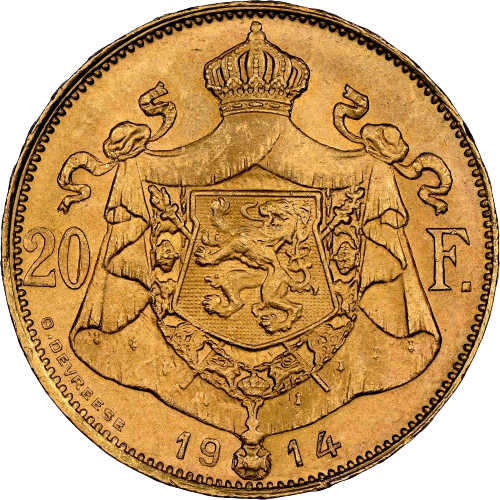
Swiss Franc | 20 Francs Confederatio Helvetica Gold Coin 1896
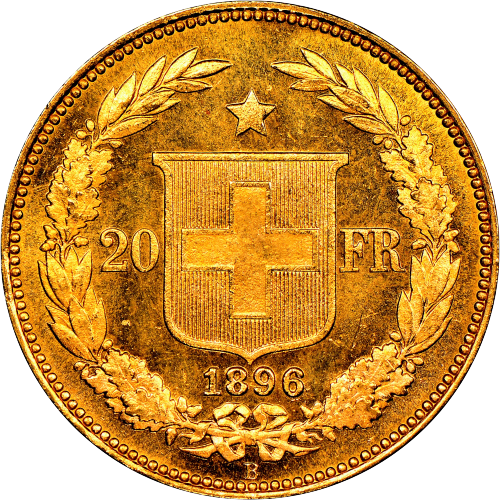
French Franc | 20 Francs Marianne Rooster Gold Coin
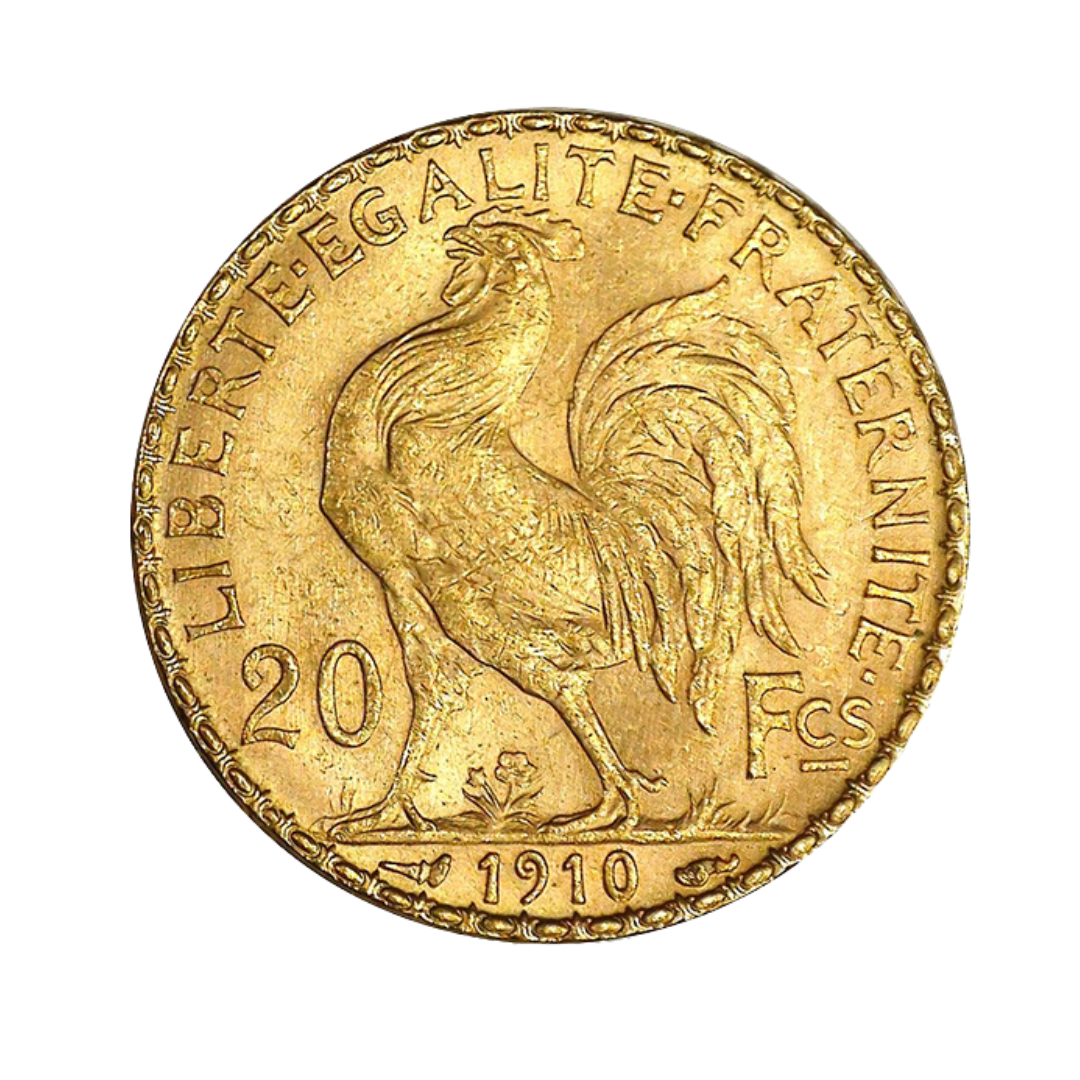
Originating from Italy and circulating throughout Europe starting from the Middle Ages, the Ducat is a coin with 800 years of history. The Republic of Venice began minting the Ducat, named after the Latin word for Duchy, in the late 13th century. The Ducat became so popular, it had replaced the Florin as the preferred currency in Italy 200 years after its first introduction. The production of the ducat peaked in the 17th and 19th centuries, with production of all ducats ceasing in the 20th century with the start of World War I. The Venetian Ducat was the most prominent and famous Ducat variant thanks to the business powerhouse that was the Republic of Venice. However, the Austrian Ducat remains popular with collectors because of its high gold content. Austrian Ducats were minted in 23k, a sight rarely seen amongst coins from the Middle Ages.
The Austrian Mint struck and distributed its last Ducat in 1914, but the Mint did have a restrike of the 1 and 4 Ducat coins in 1915, shown below!
1 Ducat Austrian Gold Coin 1915
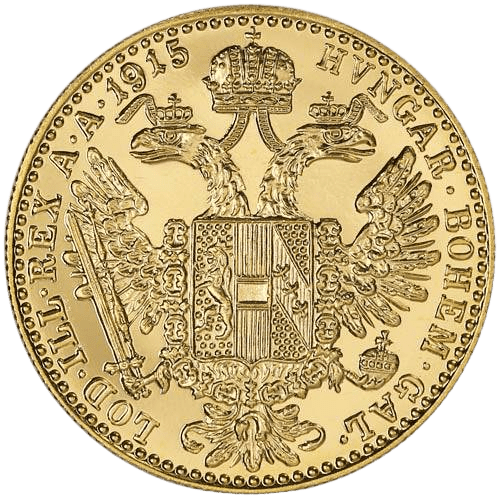
4 Ducat Austrian Gold Coin 1915
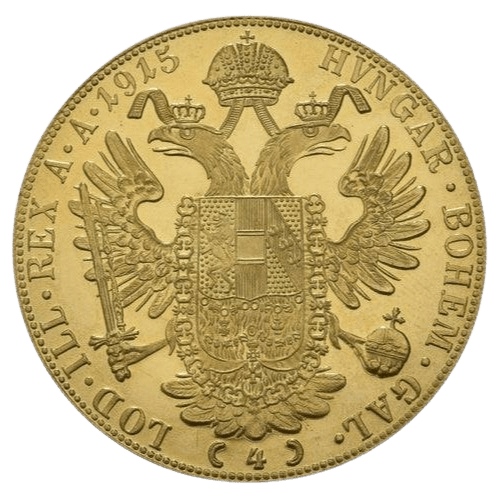
The Mexican Gold Pesos, also known as the Centenario, were first minted in honour of Mexico’s 100 years of independence and were once the purest 1-ounce gold coin in circulation. Many of the 50 gold peso coins that are traded have a date of 1947, which would lead many collectors to believe that it was the year Mexico minted the most Gold Pesos, but in reality, most of the 1947 coins were not minted in 1947. The last official production year of the 50-peso gold coins was 1947, but there have been restrikes from the Mexican mint ever since. All the restrikes produced between 1949 to 1972 are dated 1947 to mimic the 1947 Gold Pesos. Although the restrikes were produced from 1949 to 1972, it doesn’t take anything away from the demand and popularity of these coins. It is almost impossible to notice the difference between the restrike and the original coin. Roughly 309,000 of the 1947 50 gold pesos were minted, and nearly 4 million 50 gold pesos were re-struck from 1949 to 1972.
See the Pesos we have in store:
50 Pesos Mexican Gold Coin 1947
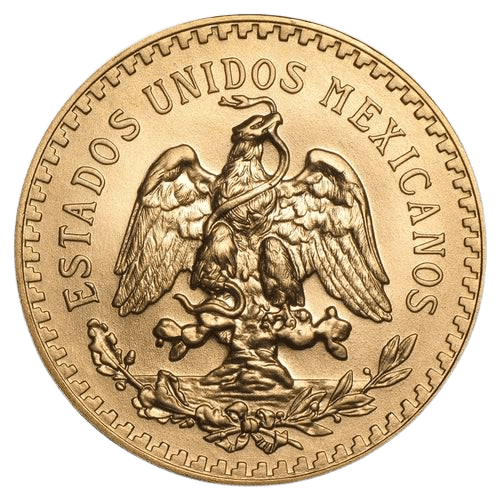
The British sovereign is a coin with a nominal value of one pound sterling. It was originally a circulating coin that was for use as common currency around 1817, and appeared after the Great Recoinage of 1816, the UK's attempt at re-stabilizing its currency after the Napoleonic Wars. The British government promoted the use of the sovereign for international trade as the coin’s consistency in purity and weight made it a trusted currency for transactions involving gold bullion. With the start of the First World War in 1914, the sovereigns vanished from circulation in Britain, and the government withdrew the coins to help finance the First World War. After the Second World War and the introduction of the Bretton Woods system, the Royal Mint gradually ceased production of the sovereign coins for daily use and transitioned to issuing sovereigns for investors and collectors. Today, the British Sovereign coins are mainly for collectors and numismatic fanatics who appreciate the rich history behind these sovereigns! Read more about the British sovereign here!
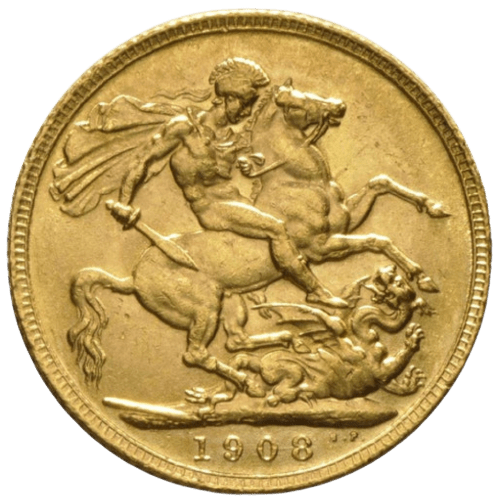
See our collection of British sovereign coins here!
Gold has played a huge role acting as the world’s currency for centuries, and even now, it is the reserve currency for central banks globally (click here to read more about gold’s history). Although our monetary system is not tied to gold anymore, the remnants of gold currencies still exist as collector’s items for numismatic enthusiasts and rare coin collectors. Old European coins from Britain, France, Austria, Belgium, and Switzerland are coveted for their rarity, intrinsic value, intricate designs, and numismatic value. Coins with rare years and denominations will sell at a higher premium because of scarcity. Below, we outline the history and facts about some of the most popular gold currencies to collect!
The Franc derived its name from the depiction of King John II the Good in full armour with the legend Johannes Dei Gracia Francorum Rex. Francorum Rex was abbreviated to Franc, and the coin was established as the national currency of France in 1799. Originally a French coin, the Franc was adopted by other European countries, namely Switzerland, Belgium and Luxembourg as their official currency. In the case of Switzerland, a country that accepted foreign coin types and adopted a variety of currencies over the years, it wanted to simplify trade with the French. Thus, the Swiss franc was introduced in 1850 as Switzerland's official currency. Following Belgium’s independence from the Netherlands, the Belgian Franc was adopted as the official currency of Belgium in 1832 and began spreading to other countries, with the Belgian Franc circulating in Luxembourg. Luxembourg then subsequently adopted the Luxembourg Franc as their official currency in 1848 in place of the Dutch guilder. The death of the Franc came when the European Union formed in 1993. The Union wanted economic integration within the EU to promote and encourage trade and investment between members of the Union. As a result, Franc ceased to be legal tender in 2002 when the Euro became the prevailing currency of the union.
Gold Francs still exist today as a collectible coin. Gold Franc Coins usually consist of 0.900 gold and have intrinsic as well as numismatic value. Below, we have some examples of Swiss, French, and Belgian Francs.
Belgian Franc | 20 Francs Albert I Belgian Gold Coin 1914

Swiss Franc | 20 Francs Confederatio Helvetica Gold Coin 1896

French Franc | 20 Francs Marianne Rooster Gold Coin

Originating from Italy and circulating throughout Europe starting from the Middle Ages, the Ducat is a coin with 800 years of history. The Republic of Venice began minting the Ducat, named after the Latin word for Duchy, in the late 13th century. The Ducat became so popular, it had replaced the Florin as the preferred currency in Italy 200 years after its first introduction. The production of the ducat peaked in the 17th and 19th centuries, with production of all ducats ceasing in the 20th century with the start of World War I. The Venetian Ducat was the most prominent and famous Ducat variant thanks to the business powerhouse that was the Republic of Venice. However, the Austrian Ducat remains popular with collectors because of its high gold content. Austrian Ducats were minted in 23k, a sight rarely seen amongst coins from the Middle Ages.
The Austrian Mint struck and distributed its last Ducat in 1914, but the Mint did have a restrike of the 1 and 4 Ducat coins in 1915, shown below!
1 Ducat Austrian Gold Coin 1915

4 Ducat Austrian Gold Coin 1915

The Mexican Gold Pesos, also known as the Centenario, were first minted in honour of Mexico’s 100 years of independence and were once the purest 1-ounce gold coin in circulation. Many of the 50 gold peso coins that are traded have a date of 1947, which would lead many collectors to believe that it was the year Mexico minted the most Gold Pesos, but in reality, most of the 1947 coins were not minted in 1947. The last official production year of the 50-peso gold coins was 1947, but there have been restrikes from the Mexican mint ever since. All the restrikes produced between 1949 to 1972 are dated 1947 to mimic the 1947 Gold Pesos. Although the restrikes were produced from 1949 to 1972, it doesn’t take anything away from the demand and popularity of these coins. It is almost impossible to notice the difference between the restrike and the original coin. Roughly 309,000 of the 1947 50 gold pesos were minted, and nearly 4 million 50 gold pesos were re-struck from 1949 to 1972.
See the Pesos we have in store:
50 Pesos Mexican Gold Coin 1947

The British sovereign is a coin with a nominal value of one pound sterling. It was originally a circulating coin that was for use as common currency around 1817, and appeared after the Great Recoinage of 1816, the UK's attempt at re-stabilizing its currency after the Napoleonic Wars. The British government promoted the use of the sovereign for international trade as the coin’s consistency in purity and weight made it a trusted currency for transactions involving gold bullion. With the start of the First World War in 1914, the sovereigns vanished from circulation in Britain, and the government withdrew the coins to help finance the First World War. After the Second World War and the introduction of the Bretton Woods system, the Royal Mint gradually ceased production of the sovereign coins for daily use and transitioned to issuing sovereigns for investors and collectors. Today, the British Sovereign coins are mainly for collectors and numismatic fanatics who appreciate the rich history behind these sovereigns! Read more about the British sovereign here!

See our collection of British sovereign coins here!
No comments